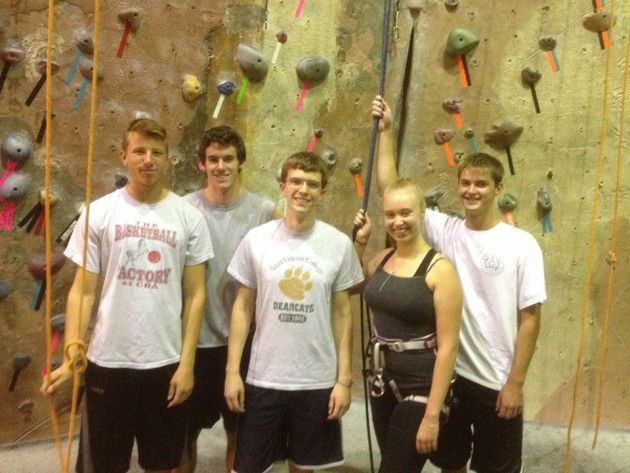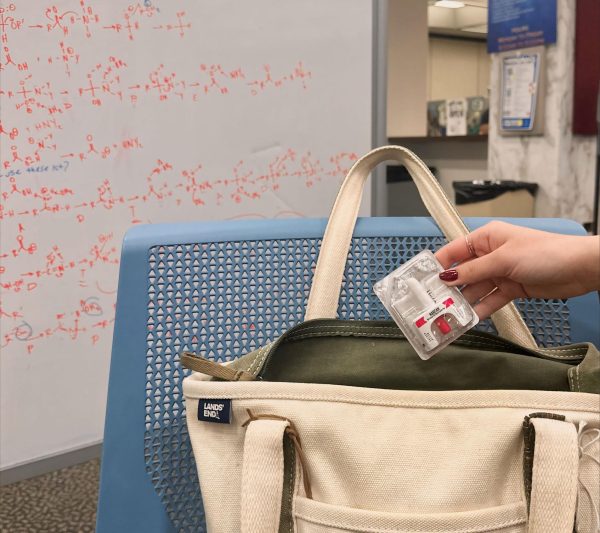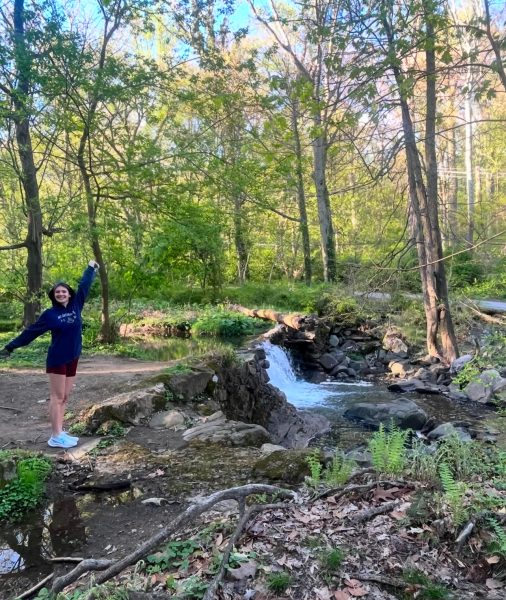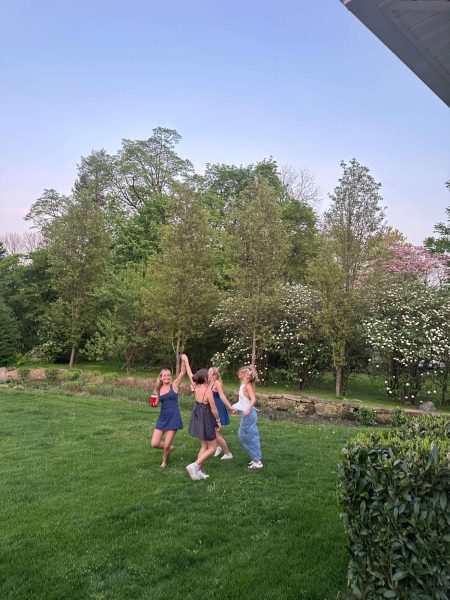Climb to the top with the Indoor Rock Climbing Club
January 31, 2017
A junior jams her hand into a crevice—her right foot dangles 30 feet in the air as she tries to hoist up her body weight on top of the next hold. After a couple calculated moves, she realizes the only way to finish the route is to leap off the rock 35 feet in the air. A senior belayer, who is unanchored to the ground and connected by rope to the junior, braces for the possibility of flying upwards if the junior’s leap is unsuccessful. Meanwhile, a freshman is hanging upside down from a wall without a rope, and a sophomore watch the climbers from a bench while rubbing his achy and burning forearms. After a hard night’s work, the students gather into a white van and head back to campus. This is typical Friday night for members of the University’s Indoor Rock Climbing Club.
Once a week, the club takes 10 to 15 students to an indoor rock gym outside Philadelphia. The club’s members of diverse climbing backgrounds build both muscle and relationships as they physically support the weight of their peers if one falls.
Andrew Freed ‘18, last semester’s club vice president, joined to de-stress and physically challenge himself.
“Since joining the club, I learned to trust people that I may have just met,” Freed said. “I’ve belayed people who only just met me. It’s a beautiful thing when people get over their fear and climb to the top of their first rock wall.”
Under the advisement of Dean Paul Pugh, five freshmen founded the club in 2012 with the mission of bringing students together to climb. Liesl Krause, Daniel Cluskey, Ryan McNulty, Matthew Hanagan and Nick Blodgett created the club to offer students an “alternative Friday night activity.”
During the summer of 2012, Krause spent her time rock climbing with one of her brothers when she realized she wanted to continue this new hobby at Villanova. Upon learning there was no rock-climbing club at the University, she contacted Philly Rock Gym to discuss the creation of a student club membership contract. She was highly influenced by Pugh’s instruction of her fourth hour in the leadership learning community. With small adjustments to the contract, the University agreed to the creation of the club.
“I think the Indoor Rock Climbing Club provides a number of benefits,” Pugh said. “It builds confidence and self-esteem. It promotes team work. It enhances communication skills. It provides physical fitness in a fun environment, and it provides an alternative social outlet that is positive and healthy.”
Reflecting on the lessons she learned while leading the club for four years, Krause recalls the trials of time management and organization. “In the beginning, I tried to take on everything myself,” she said. “I also learned how to negotiate a contract when we first started working with [the gym]. When they learned how clubs at Villanova obtained funds, they were very sympathetic to our needs and worked to create a model that would work for the gym and the University.”
While the mission has not changed in five years, the club evolved to better serve the students’ financial needs. In the past, members had to pay around 20 dollars per climb depending on the need to rent shoes and harnesses. Currently, students pay a flat rate of 20 dollars per semester with the opportunity to sign up for climbs each week—rental equipment and a free shirt included
For those with limited or no climbing experience, students may take lessons in bouldering and top-rope. Bouldering involves climbing walls without the use of ropes or harness. Climbers must know how to place landing mats, and they must demonstrate the two ways to safely fall. Climbers who are top roping are securely attached to a rope connecting to the top of the climb to a person, also called a belayer, on the ground. The job of the belayer involves using an anchor system to ensure the safety of the climber.
Catherine Goohs ’18 will take Freed’s leadership position this semester. “Rock climbing not only provides a fun way to get off campus and spend time with fellow climbers, but also is a truly unique work out: at times a three-hour stint at the rock gym can feel like a 20 minute exercise session, all the while you are toning your back, shoulders, forearms,” she said. “Even your finger tip muscles feel strengthened at the end of a climb.”












